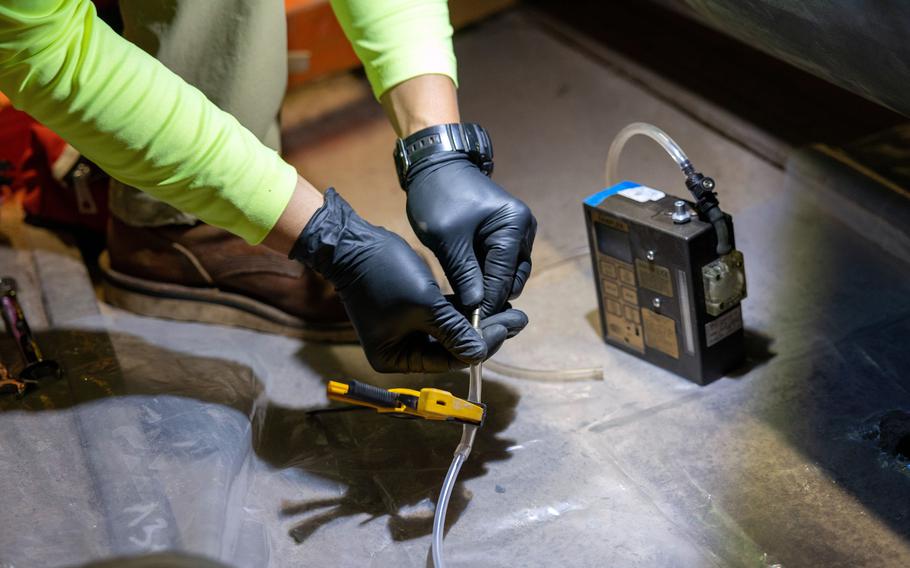
A Navy contractor prepares a tube for soil vapor monitoring at the Red Hill Bulk Fuel Storage Facility in Hawaii on March 25, 2024. (Krystal Diaz/U.S. Navy)
FORT SHAFTER, Hawaii — The Navy task force overseeing permanent closure of the Red Hill Bulk Fuel Storage Facility in Hawaii has launched a mobile app offering the latest developments in tank cleaning, closure and environmental cleanup.
Late last month, Navy Closure Task Force-Red Hill assumed control of decommissioning the site from an initial task force that had emptied more than 104 million gallons of fuel there.
The app is a repurposing of one created by the first task force last summer to keep the public informed of its progress in defueling the tanks.
“Taking over the Joint Task Force-Red Hill app and rebranding with Navy Closure Task Force provides an additional outreach opportunity to keep the public informed about the decommissioning progress,” Rear Adm. Steve Barnett, who heads the task force and also commands Navy Region Hawaii, said in a news release Wednesday.
“This app is another communication method we are using to share important information and to reach a larger audience across numerous digital platforms,” he said.
The new Navy app can be downloaded on the iOS app store for Apple devices or the Google Play store for Android users. It can be found by searching “NCTF-Red Hill.”
Defense Secretary Lloyd Austin in March 2022 ordered the World War II-era facility permanently closed after it leaked jet fuel in late 2021 that contaminated the Navy’s water distribution system.
Thousands of people living in military housing communities on or near Joint Base Pearl Harbor-Hickam who were on that system were forced to temporarily relocate as the Navy flushed it out.
One well, which remains isolated from the system, is still contaminated. The extent of soil contamination around and below the underground tank complex remains unknown.
Hundreds of residents and former residents have filed suit in federal court seeking compensation for medical conditions and other hardships they say arise from the contamination.
The Navy Closure Task Force faces years of work ahead.
It must remove about 4,000 gallons of residual fuel in the pipelines that was not possible to drain using gravity. It is accessible only as contractors begin dismantling the infrastructure.
A bigger job awaits the task force in emptying about 28,000 gallons of sludge at the bottom of the facility’s 20 massive tanks, cleaning them for permanent closure and removing contaminants that have leeched into the soil and aquifer.